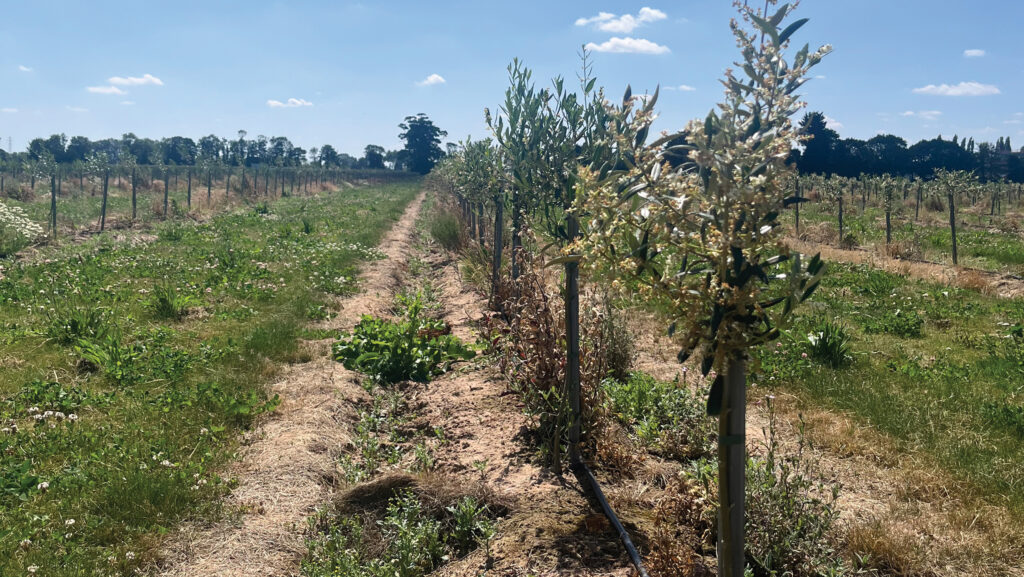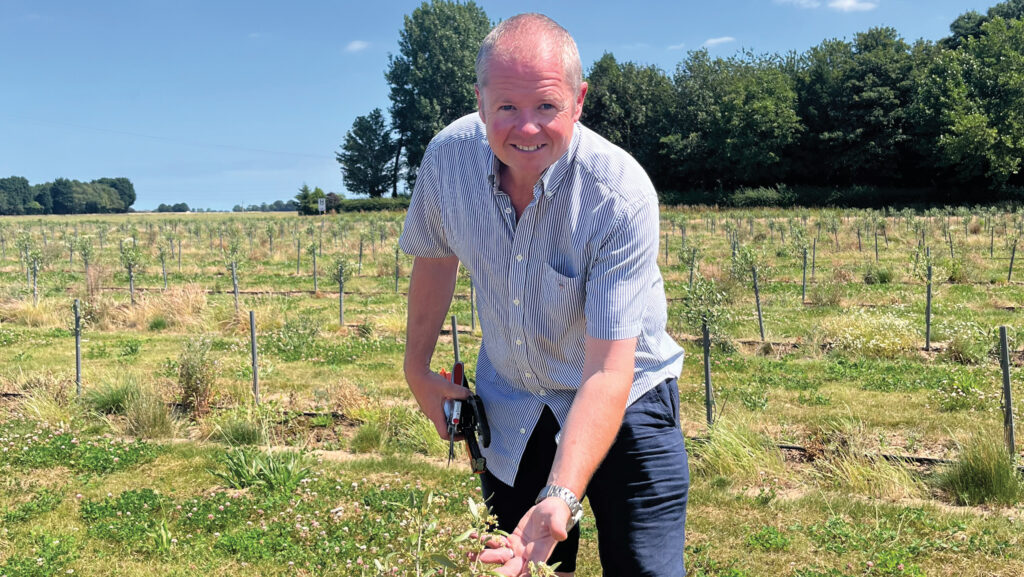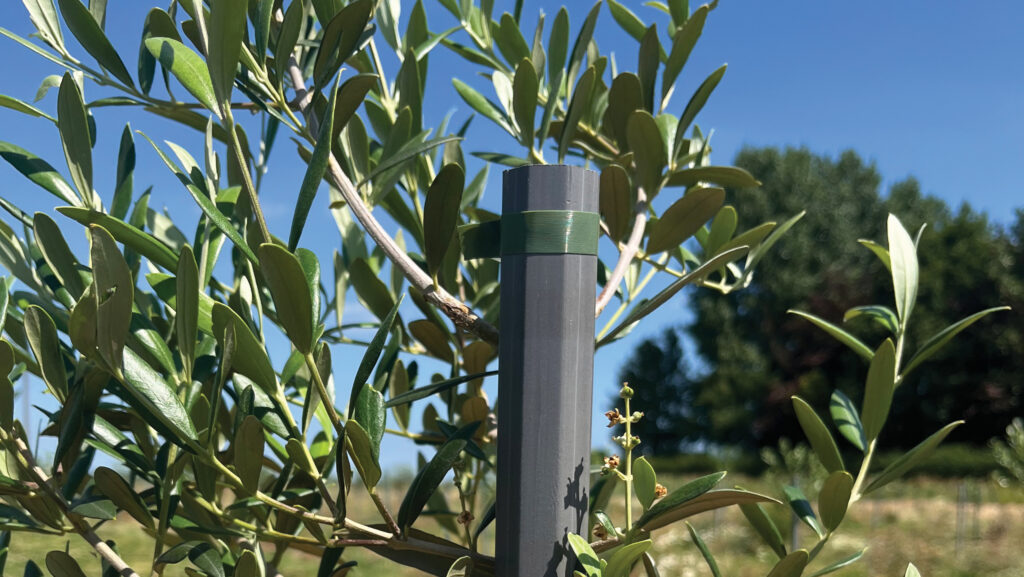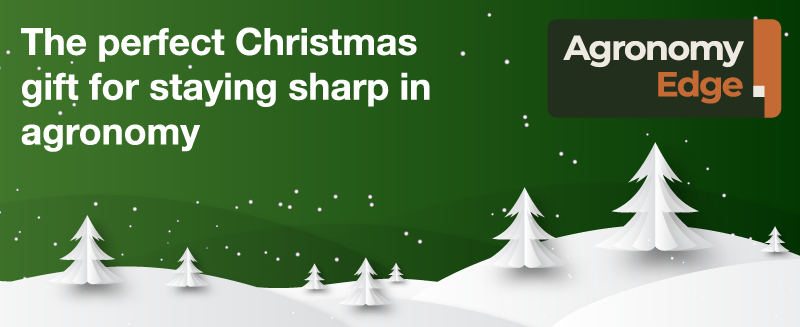Grower ventures into olive oil production despite risks
 © Louise Impey
© Louise Impey A 10ha olive grove – thought to be the most northerly of its type in the world – is in its second year growing on a Lincolnshire farm.
David Hoyles describes his latest diversification into olive oil production as an expensive and long-term project which comes with plenty of risks and challenges.
See also: Why Herts farming family are moving their business to France
In a region more usually associated with vegetable production, the grove sits alongside 700ha of wheat, potatoes, sugar beet, peas and mustard grown by GH Hoyles in Long Sutton, near Spalding.
David notes that after a slower start last year, the trees are growing strongly in this season’s hot and dry conditions.
The Hoyles family is also involved in renewable energy production, water storage and management facilities, and has a secure dog walking field, with another in the planning stage.
“Cropping is our key activity and that drives everything else we do,” says David. “We are always looking at ways to mitigate risk, add value and prepare for the next generation.”
Farm facts: GH Hoyles

David Hoyles © Louise Impey
- Farming 700ha across three sites, growing potatoes, sugar beet, winter wheat, peas and mustard, with a focus on sustainable food production
- 10ha olive grove, planted for oil, with trickle fertigation. First commercial harvest is scheduled for 2026
- Three reservoirs storing 180,000cu m of abstracted excess winter water, with 8km of underground mains, 12km of private ditches and under-field drainage, plus rainwater roof harvesting
- 100kW wind turbine and 200kW solar, producing 440MWh/year and making the farm 70% sufficient in energy
- 58ha of pollen and nectar mix, wildflower strips and wild bird seed – in total 37km of 7m margins across the farms
- Fenland Dog Park offers safe and secure dog exercise area, complete with agility equipment and a small dog/puppy zone. Online booking and payment for 50-minute private slots fenlanddogpark.co.uk
Mediterranean lifestyle
He admits to having a particular interest and passion for the Mediterranean lifestyle, but also wanted to have more control of the end market, by selling direct to consumers and adding value.
Siting the olive grove where water is available and summer temperatures aren’t excessively high makes sense, he explains.
Global warming is already causing olive production to move northwards from its traditional heartlands in southern Europe.
“The rocky soil typical of Mediterranean olive groves is no longer suitable due to water scarcity and extreme summers,” he says.
“On my travels, I kept seeing olive groves alongside intensive vegetable production and wondering why they were there.”
After four years of painstaking research and numerous visits to olive producers across Europe, David took the plunge and ordered 18,000 olive trees from Spain, along with a tree planting machine.
“Importing live trees in soil was our first challenge,” he recalls.
“The phytosanitary requirements are such that these were in the highest category for risk, so had to be inspected by variety, and we were charged accordingly.”

© Louise Impey
Siting and planting
Having selected and prepared a site for the grove on his farm, planting got under way in spring 2024.
Frost-hardy varieties are growing in a high-density planting system whereby the rows of trees will merge to become hedges in three to four years and harvesting can be automated.
While olive trees need water, they don’t like sitting in it, so 20cm beds were formed ahead of planting. The farm is 2m below sea level, so the team has plenty of experience in water management.
A fertigation system was also installed. This allowed tailored nutrition according to variety and growth stage.
In total, 2.4km of permanent trickle tape was put down, with a drip outlet every 60cm.
The system is precision-regulated and controlled by an app – this year has seen them get 10-18 hours a week of trickle irrigation, with soil probes used to check moisture levels.
“Our first olive harvests will be done by hand,” explains David. “After that, as the trees grow and mature, their fruiting potential doubles every year for 10 years.”
Tree care
The young trees need plenty of attention, with staking, taping and trimming taking place every week to develop a trunk and encourage branching.
That work is being done by David, his family and the wider farm team, as they learn more about what’s required for olive production.
“It’s taken many more hours than I thought,” he says. “Fortunately, I’ve been able to tap into agronomic expertise that exists in Europe, with the help of Google Translate, to keep us on track.”
The region’s deep alluvial soils are usually associated with other crops, David acknowledges.
Despite this, the olive grove is part of a wider future-proofing plan that has seen the business already invest in three reservoirs, along with underground mains and irrigation equipment, as well as both wind and solar power.
Unlike those, the olive grove comes with uncharted risks, he says. “We are probably as far north as olives can grow, as the winters can be challenging for them.”
Weather risks
Losing flowers to spring frosts is just one of those risks, he says, so he selected later flowering varieties, but with consideration also given to their maturity.
“We need them to have matured by mid-October and no later.”
David did see 20-25% death in the first few rows of trees in the first year, as they were planted next to some woodland and then subject to a November frost.
“During the winter, it took two hours longer for the sun to get onto those trees,” he recalls. “Now that the surviving trees are three or four times the size, the winter shouldn’t be such an issue for them.”
While the first year was predominantly wet and mild, a lack of sunlight meant the trees didn’t grow as much as expected.
This year, the conditions have been more favourable and he estimates they have grown as much in three months as they did in the whole of 2024.
There are 10 varieties in total – four main ones and six single-line varieties. No fungicides or insecticides will be used on them, so everything is being done to encourage beneficials and maintain healthy trees.
A multispecies wildflower and grass mix is growing between the rows, containing red and white clover, plantain, ox-eye daisy and bird’s foot trefoil.
As a result, there’s plenty of wildlife and good numbers of pollinators.
“On a sunny day, it’s a nice place to be. This is not a monoculture or a barren landscape,” David says.
Oil production
To produce oil, the olives will need to be crushed before the oil is filtered and bottled. As well as oil, pomace and water are produced.
Pomace is a lower-value oil extracted from the pulp, often using chemicals, and goes to make products such as soap, hand cream and candles.
There are different types of olive oil, highlights David, with extra virgin being the most highly valued. Some are produced from single varieties, others are blends – all of which is reflected in the price.
He has set up an English Olive Oil website, where gifts and related merchandise will be available, and will sell oil direct to consumers.
In time, he hopes to extend the reach to local farm shops and restaurants, while further down the line he is thinking about an education centre where visits and tastings can be held.
“Low yields initially and high setup costs mean that return on investment will take a while,” he admits.
“But it’s part of a wider plan for this business which considers current challenges, political constraints and the future generation.”

